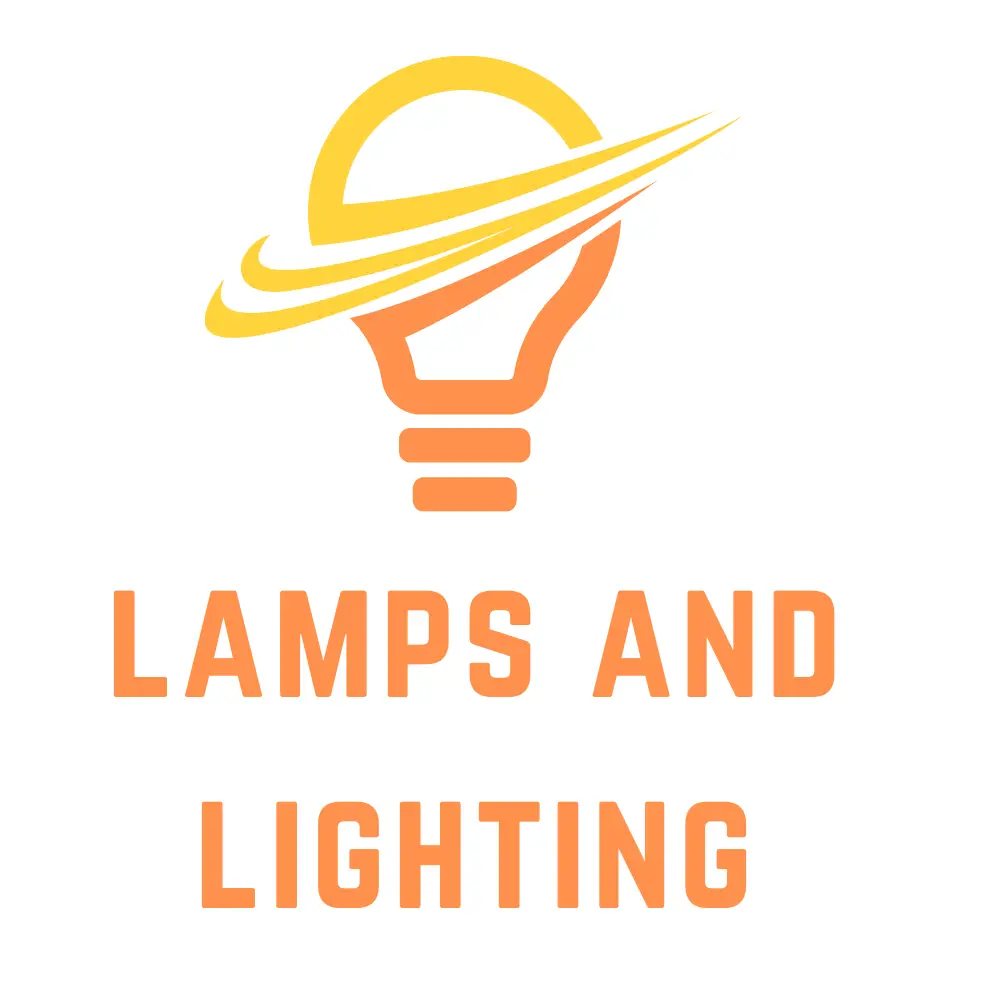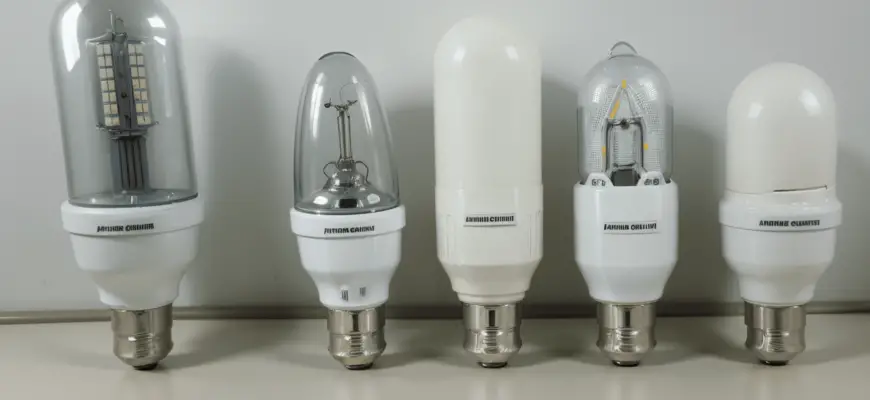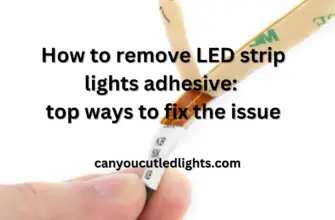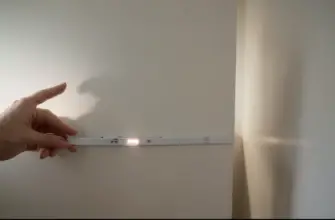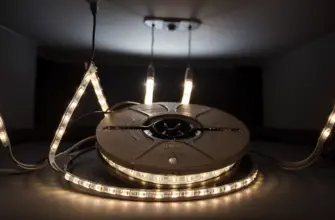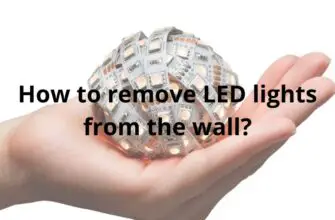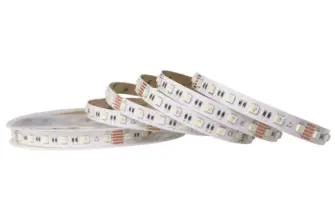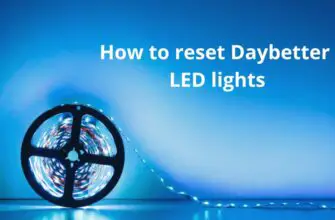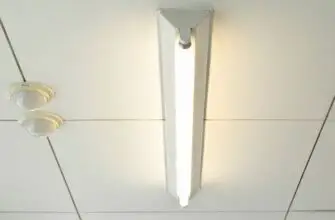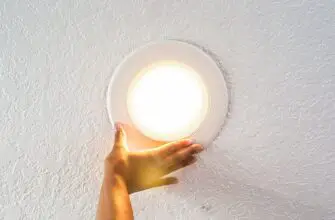This guide aims to provide insights and step-by-step instructions for individuals looking to make the switch from fluorescent lights to LED lighting solutions, whether you have flat or suspended grid ceilings. Let’s learn how to convert fluorescent light to LED.
Understanding fluorescent bulbs and LED light
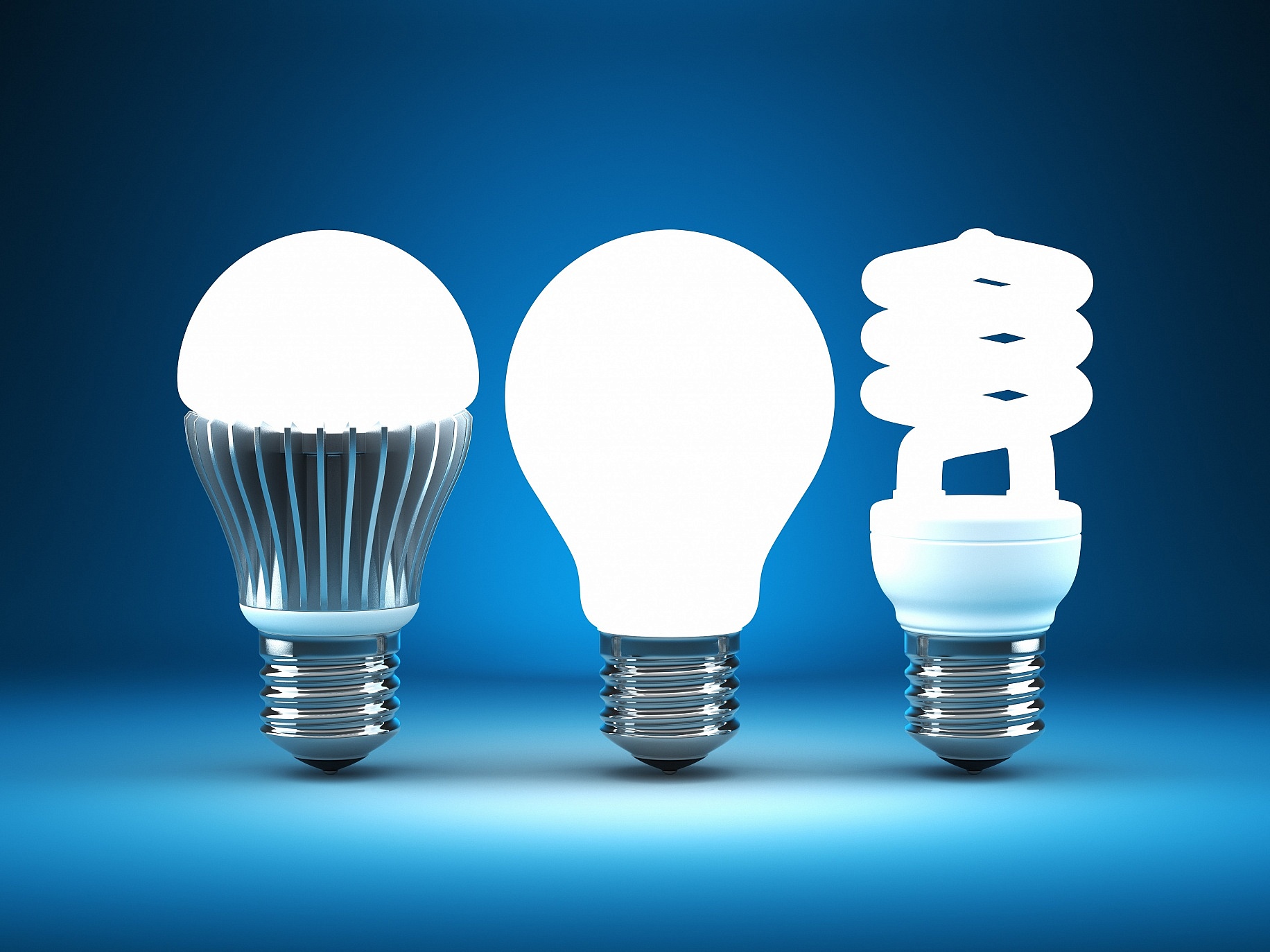
In the world of modern lighting, the dynamics between a fluorescent lighting fixture and innovative LED technology have reshaped the way we illuminate our surroundings.
To make an informed decision about lighting choices, understanding the fundamental principles and functionalities of both fluorescent fixtures and LED panel lights is crucial.
Fluorescent bulbs use a unique process to produce light. Inside the glass tube, an inert gas and a small amount of mercury vapor generate UV light when an electric current passes through.
This UV light interacts with the phosphor coating lining the tube, causing it to fluoresce and emit visible light. The functionality of fluorescent light solutions has made them prevalent in various settings for many years.
LED panel lights (Light Emitting Diodes) represent a groundbreaking advancement in lighting technology. These semiconductor devices produce light when electrons move through a semiconductor material.
LED panel lights are increasingly favored for their efficiency, durability, and environmental benefits.
Benefits of converting existing fluorescent fixtures to LED

Making the switch from a fluorescent lighting fixture to LED panel lights offers a multitude of advantages that go beyond mere illumination.
LED technology not only enhances energy efficiency but also ensures longevity and superior light quality, making it a highly advantageous choice for various settings.
Energy efficiency and cost savings
LEDs are renowned for their remarkable energy efficiency, significantly reducing electricity consumption compared to fluorescent light fixtures.
This efficiency translates into substantial cost savings over time, especially in settings where LED fixture lighting is a significant portion of overall energy usage, such as commercial spaces or households with extensive lighting needs.
Longevity and lifespan comparison
One of the standout features of LED lighting solutions is their extended lifespan when compared to fluorescent tubes. While fluorescent light fixtures typically last around 8,000-15,000 hours on average, LEDs can endure 25,000 to 50,000 hours or more.
This increased longevity drastically reduces the frequency of replacements, minimizing maintenance costs and inconvenience.
Improved light quality with LED bulbs

Beyond the sheer efficiency and longevity, the quality of light emitted by an LED fixture represents a significant leap forward in the world of illumination.
LED lights offer a host of enhancements in light quality that redefine our expectations of artificial lighting in various environments.
Color rendering
LEDs offer superior color rendering capabilities, allowing for more accurate and vibrant color representation compared to fluorescents.
This is particularly beneficial in settings where color accuracy is crucial, such as retail environments or art studios.
Brightness and reduced flickering
LED lights provide consistent brightness without flickering, a common issue associated with some fluorescent tubes.
This steady and uniform illumination contributes to a more comfortable and visually pleasing environment, especially in spaces where prolonged exposure to artificial lighting occurs.
Environmental impact
LEDs have a minimal environmental impact due to their longer lifespan and lower energy consumption.
Additionally, they do not contain hazardous materials like mercury, which is present in a fluorescent tube, making disposal safer and more environmentally friendly.
The combination of these advantages positions LED lighting as an attractive option for those seeking not only cost-effective solutions but also enhanced quality and reliability in their lighting systems.
Preparations for conversion
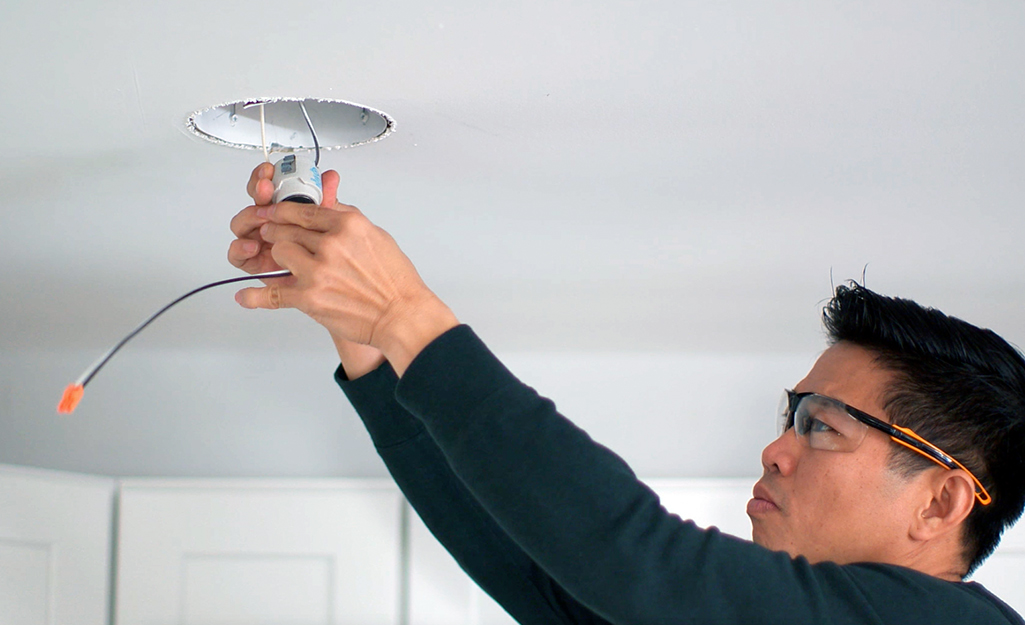
Before initiating the transition from fluorescent lights to LED lighting, it is crucial to undertake a comprehensive assessment, gather essential tools and materials, and prioritize safety measures.
These preparatory steps lay the groundwork for a smooth and successful conversion process.
Assessment of existing fixtures and compatibility
Before embarking on the conversion from fluorescent lights to LED lighting, conducting a thorough evaluation of the current lighting fixtures and their compatibility with LED retrofitting is a critical initial step. This assessment serves as the foundation for determining the feasibility and approach for transitioning to LED technology.
Evaluation of fixtures: begin by assessing the current lighting fixtures in your space. Determine the types of fluorescent fixtures present, whether they’re in the form of tubes, troffers, or other configurations. Understanding the existing setup will help identify the best approach for LED retrofitting.
Compatibility check for LED retrofitting: verify the compatibility of your fixtures for LED retrofitting. Certain LED tubes or bulbs might be compatible with specific types of ballasts commonly used in fluorescent fixtures, while others might require a ballast bypass or a compatible LED driver for direct wiring.
Gathering necessary tools and materials

Ensuring you have the essential tools and materials on hand is vital for a smooth and efficient transition from fluorescent to LED lighting.
Acquire LED retrofit kits or bulbs suitable for your specific fixtures. Ensure that these LED tube lights are compatible with your fixtures or that any necessary modifications can be made to accommodate them.
Gather essential tools such as:
- Wire cutters
- Screwdrivers (Phillips and flat-head)
- Electrical tape
- Voltage tester or multimeter
- Wire strippers
- Pliers
- Ladder or scaffolding (if needed for high installations)
- Safety goggles
- Insulated gloves
- Non-contact voltage detector
- Wire nuts or connectors
- Fish tape or cable-pulling tools (if rewiring is necessary)
- Circuit tester
- Level (for precise installation)
- Allen wrenches or hex keys (if required for specific fixtures)
Safety precautions and considerations
Power off and safety first: prioritize safety by turning off the power supply to the lighting fixtures before starting any work. Additionally, ensure proper personal protective equipment (PPE) such as gloves and safety goggles are worn when handling electrical components.
Taking these preparatory steps not only streamlines the conversion process but also minimizes potential risks and ensures a safe and efficient transition from fluorescent to LED tube lighting.
Step-by-step conversion process
Undertaking the conversion from fluorescent to LED lighting involves a systematic approach that includes the removal of present fixtures, retrofitting techniques, wiring considerations, and installation tips for various types of fixtures.
Removal of existing fluorescent tubes or fixtures

Power off and safety precautions: begin by turning off the power supply to the fixtures and following appropriate safety measures, including using personal protective equipment (PPE) like gloves and safety goggles.
Remove fluorescent tubes or fixtures: for tube-style fixtures, twist and gently rotate the tubes to release them from the sockets. Ensure proper disposal of the fluorescent tube according to local regulations, considering their mercury content.
Retrofitting techniques
Choosing the correct LED retrofit solution: select LED replacement tubes or bulbs compatible with the existing fixture or follow manufacturer recommendations for retrofit kits. Ensure they match the specifications and size requirements of the fixture.
Installation methods:
- For compatible LED tubes, insert them into the sockets in the same manner as fluorescent tubes.
- In cases requiring a ballast bypass, follow the instructions provided with the LED retrofit kit for proper wiring and installation.
Ballast bypass or compatible ballast installation:
- Some LED tubes require a ballast bypass, while others work with compatible ballasts. Follow the manufacturer’s guidelines for the specific wiring instructions.
- If bypassing the ballast, rewire the fixture to accommodate the direct connection of the LED tubes.
Installation tips for different types of fixtures
Troffers: follow specific guidelines for troffer-style fixtures, which might involve removing the existing ballast or retrofitting with compatible LED panels.
Strip lights: Replace fluorescent tubes with LED strips or tubes designed for strip light fixtures, ensuring proper sizing and installation techniques.
Adhering to these step-by-step instructions ensures a smooth transition from fluorescent to LED lighting, allowing for the proper installation and functionality of the new LED fixtures.
Troubleshooting and common challenges
While transitioning from fluorescent to LED lighting, encountering potential issues or technical difficulties is not uncommon.
Understanding how to address these challenges and having troubleshooting techniques at hand can help overcome obstacles during the conversion process.
Compatibility problems: sometimes, compatibility issues arise when retrofitting LED products into existing fixtures. If LED tubes or bulbs are not functioning correctly or flickering, it might indicate an incompatible ballast or wiring issue.
Inadequate light output: insufficient light output after LED installation could be due to incorrect installation, improper wiring, or selecting LEDs with lower brightness levels than required for the space.
Troubleshooting tips
Check compatibility and wiring: double-check compatibility between LED products and existing fixtures. Ensure correct wiring and proper connections, especially if a ballast bypass or modifications were performed during the installation.
Test with different LEDs: if issues persist, try testing with different LED tubes or bulbs to ensure the problem is not specific to a defective LED product.
Consulting an electrician: if troubleshooting steps don’t resolve the issues, consider consulting a qualified electrician or lighting professional. They can conduct a thorough assessment and offer guidance on resolving technical challenges.
Manufacturer support: contact the manufacturer’s customer support for guidance. They often provide technical assistance, troubleshooting tips, or product replacement if the issue lies with the LED products themselves.
Navigating through troubleshooting steps and seeking professional assistance, when necessary, ensures a successful transition to LED lighting. Remember, addressing challenges promptly contributes to the overall effectiveness and functionality of the new lighting system.
Post-conversion considerations
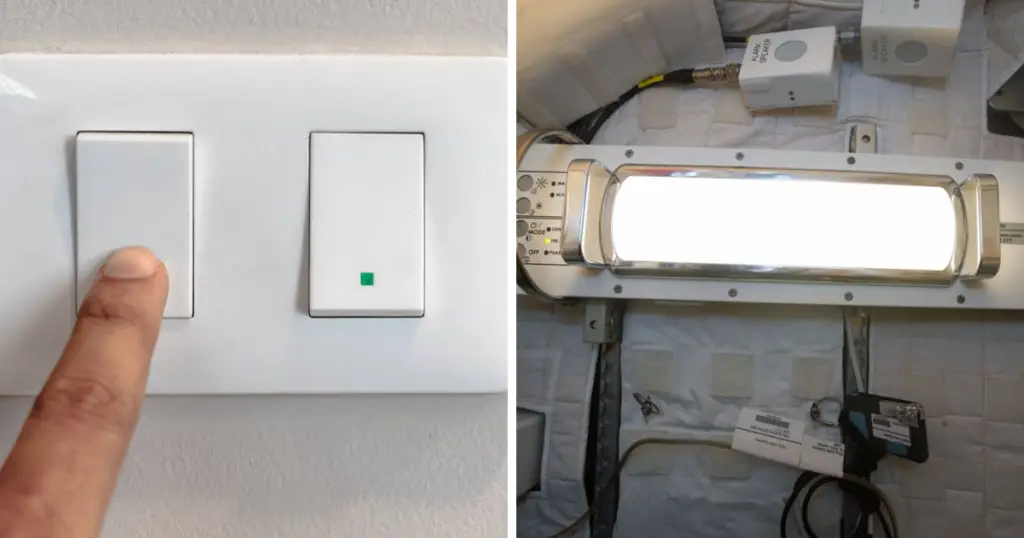
Once the transition from fluorescent to LED lighting is complete, it’s essential to conduct tests, implement proper maintenance strategies, and monitor the impact of the new LED fixtures on energy consumption and the environment.
Testing newly installed LED lights:
- Functionality testing: verify the functionality of the newly installed LED lights. Ensure that all fixtures are operating as intended, emitting proper light output, and functioning without flickering or inconsistencies.
- Performance evaluation: assess the performance of the LED fixtures concerning the desired lighting levels and uniformity across the space. Make adjustments as needed to optimize the lighting quality and distribution.
Tips for proper maintenance and maximizing lifespan:
- Regular cleaning: maintain the cleanliness of LED fixtures by regularly dusting or cleaning them to prevent dust accumulation, which can affect light output and performance.
- Scheduled inspections and replacements: implement scheduled inspections to detect any early signs of malfunction or degradation in LED performance. Replace any faulty or underperforming LED components promptly to maintain optimal functionality.
Monitoring energy savings and environmental impact:
- Tracking energy consumption: monitor and compare energy consumption after the LED conversion. Keep records of energy usage to quantify the cost savings and efficiency gains achieved through the switch to LED technology.
- Environmental impact assessment: evaluate the environmental impact of the conversion by considering reduced energy consumption and the elimination of hazardous materials like mercury found in fluorescent lights. Measure the positive environmental footprint resulting from the adoption of LED fixtures.
Regular testing, maintenance, and monitoring enable the sustained performance of LED lighting systems, ensuring optimal functionality, cost savings, and positive environmental contributions post-conversion.
Conclusion
The transition from traditional fluorescent lighting fixtures to advanced LED technology marks a significant stride toward efficiency, sustainability, and enhanced lighting quality.
We’ve explored the intricacies of converting existing fixtures to LED and highlighted the numerous advantages this transformation offers, whether you have flat or suspended grid ceilings.
FAQ
Can you convert a fluorescent fixture to LED?
Yes, converting fluorescent fixtures to LED using an LED conversion kit to retrofit LED tubes or direct replacement with new LED tubes.
Can I directly replace fluorescent tubes with LED?
Yes, you can directly replace fluorescent tubes in your fluorescent fixture with LED tubes designed for compatibility with existing fixtures.
Do I need to remove the ballast to use an LED bulb?
Depending on the LED bulb or retrofit kit, you may need to remove the ballast for proper functionality, while some LED bulbs work with compatible ballasts.
How to bypass a ballast to install LED tubes in a fluorescent?
To bypass a ballast for LED tube installation in a fluorescent fixture:
1. Turn off the power supply.
2. Cut and remove the ballast wiring.
3. Connect the live and neutral wires directly to the tombstones.
4. Insert the LED tubes, following manufacturer instructions for wiring and installation.
